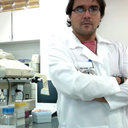Hydroethanolic extract from Echinodorus scaber Rataj leaves inhibits inflammation in ovalbumin-induced allergic asthma.
Ключевые слова
абстрактный
BACKGROUND
Echinodorus scaber, Alismataceae, is popularly known in Brazil as "chapéu-de-couro". The plant leaves are used by the population as decoction, infusion, or maceration in bottled spirits, to treat inflammatory respiratory diseases.
OBJECTIVE
To investigate the anti-inflammatory mechanism of the hydroethanolic extract of leaves of Echinodorus scaber (HEEs) in allergic asthma. A phytochemical analysis of the extract was performed as well.
METHODS
The leaves of Echinodorus scaber were prepared by maceration in 75% ethanol. Preliminary phytochemical analysis was carried out using basic classical methods, and the secondary metabolites detected in HEEs were analyzed and confirmed by high-performance liquid chromatography (HPLC). The in vivo anti-inflammatory activity of HEEs was evaluated in Swiss male albino mice sensitized and challenged by OVA. The HEEs (1, 5 and 30mg/kg, p.o.) was administered to mice twice a day, 1h before the challenge, from days 19 through 24. The mechanism of action of HEEs was studied by evaluating the levels of TH2 cytokines (IL-4, IL-5 and IL-13) in bronchoalveolar lavage fluid (BALF) and IgE production in blood plasma. Histopathological changes triggered by OVA-sensitization/challenge in the lung tissue were also investigated.
RESULTS
HEEs reduced total leukocyte, eosinophil, neutrophil, and mononuclear cell counts at all doses tested, with maximum effect at 30mg/kg (73.9%, 75.9%, 75.5%, and 65.2% reduction, p<0.001, respectively). Increases in TH2 cytokine secretion (IL-4, IL-5 and IL-13) and in IgE levels were also attenuated by HEEs. Preliminary phytochemical screening seems to indicated the presence of phenolic compounds, flavonoids and alkaloids. HPLC analyses evidenced the presence of phenolic compounds, such as gallic acid, rutin and vitexin.
CONCLUSIONS
Our findings provided pharmacological preclinical evidence for the popular use of the leaves of Echinodorus scaber in allergic inflammation. Its anti-inflammatory effect was dependent on the decrease in migratory inflammatory cells, and both TH2 cytokines and IgE levels. It is suggested that vitexin, gallic acid and rutin, known anti-inflammatory compounds, may participate in the anti-asthamtic effect of the HEEs, by acting jointly along with other components present in the extract.


